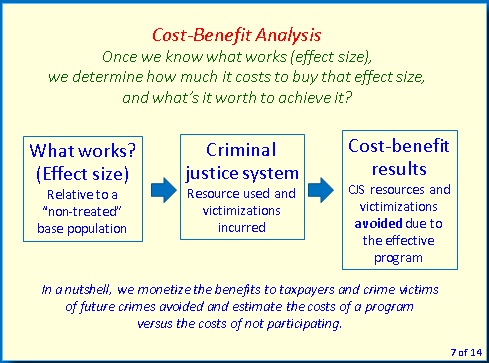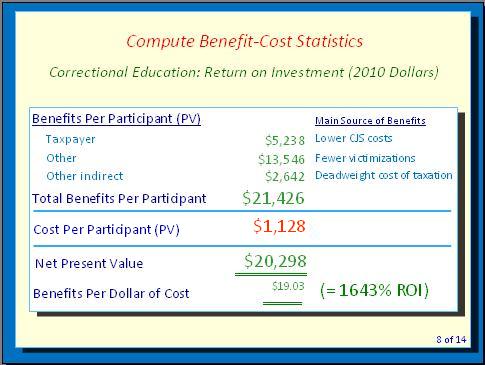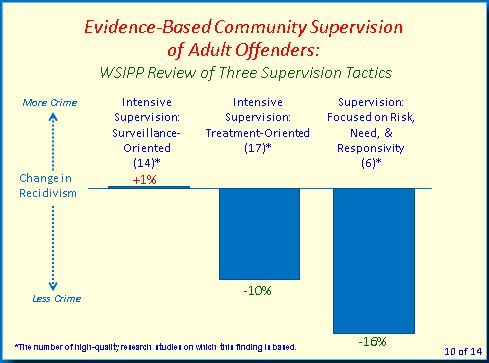Ever wondered how policies get selected and implemented? Me too! It was with this and other questions that I attended a presentation by Elizabeth K. Drake a Senior Research Associate with the Washington State Institute for Public Policy (WSIPP).
Drake started by presenting a three-step model used to help policy makers on what works and what doesn’t and ended by showing how the approach was used in her work at WSIPP. The last part of the three-step process is a fairly new approach that helps stakeholders gain a better understanding about which program/cost combinations yields the best results.
The Three (3) Steps
- What works (to improve outcomes)? Conducting an outcome evaluation or meta-analysis can be used to fulfill this step. The first requires one to conduct a rigorous evaluations to determine if a particular program achieves expected outcome. However, it can be expensive and time-consuming. The latter requires researchers to identify programs that have already been rigorously tested elsewhere and we make a ranked list. This can help reveal the average effect. Although it is not expensive and you can do it immediately, it is not as effective in providing information on specific things researchers maybe interested in.
- What pays off for taxpayers? Determining the effectiveness of a program is an important first step. However, they may be so expensive that it doesn’t pay off. Researchers conduct a cost/benefit analysis–compute benefits, costs and risks (return on investment) to the people of Washington for each policy option.

- How would a “portfolio” of options affect statewide outcomes? How much risk of failure? Portfolio here refers to a menu of programs being funded. The “new kid on the block”, this step compliments the first two by exploring the impact of a program within the larger ecosystem (e.g. the statewide crime rate, graduation rate). Then researchers try different scenarios to understand the effect on shifting funding around. The intent here is to invest wisely without negatively affecting the portfolio of outcomes.
If done satisfactory, the three (3) step approach leads will help researchers articulate what works/doesn’t.
In Action
Drake and her colleagues used the approach described above to inform their recent research and publication.
- What works? Based on eleven (11) studies selected using the method described in step one, they determined that correction Education for Offenders in Prison Reduces Recidivism Rates by 16 percent.
- Long term: Without education over the 15 yr period there is 66% risk of recidivism.
- With corrections education that DROPS to 57%
- What pays off for taxpayers?
- For every one dollar invested in corrections education you save 19.00
- In a model ran 10,000 times, 100% of the time there is a benefit

- Portfolio of Options
Based on the chart below one could conclude that the supervision tactic that focuses on risk, need and responsivity is the most effective.

Give it a Try
Well. you now have everything you need to get started. This is my first exposure to this type of logic, so I am still wrapping my head around it. Perhaps you can help me make additional sense.
Still got questions? Put them in the comments section and I will try to get them answered for you.
